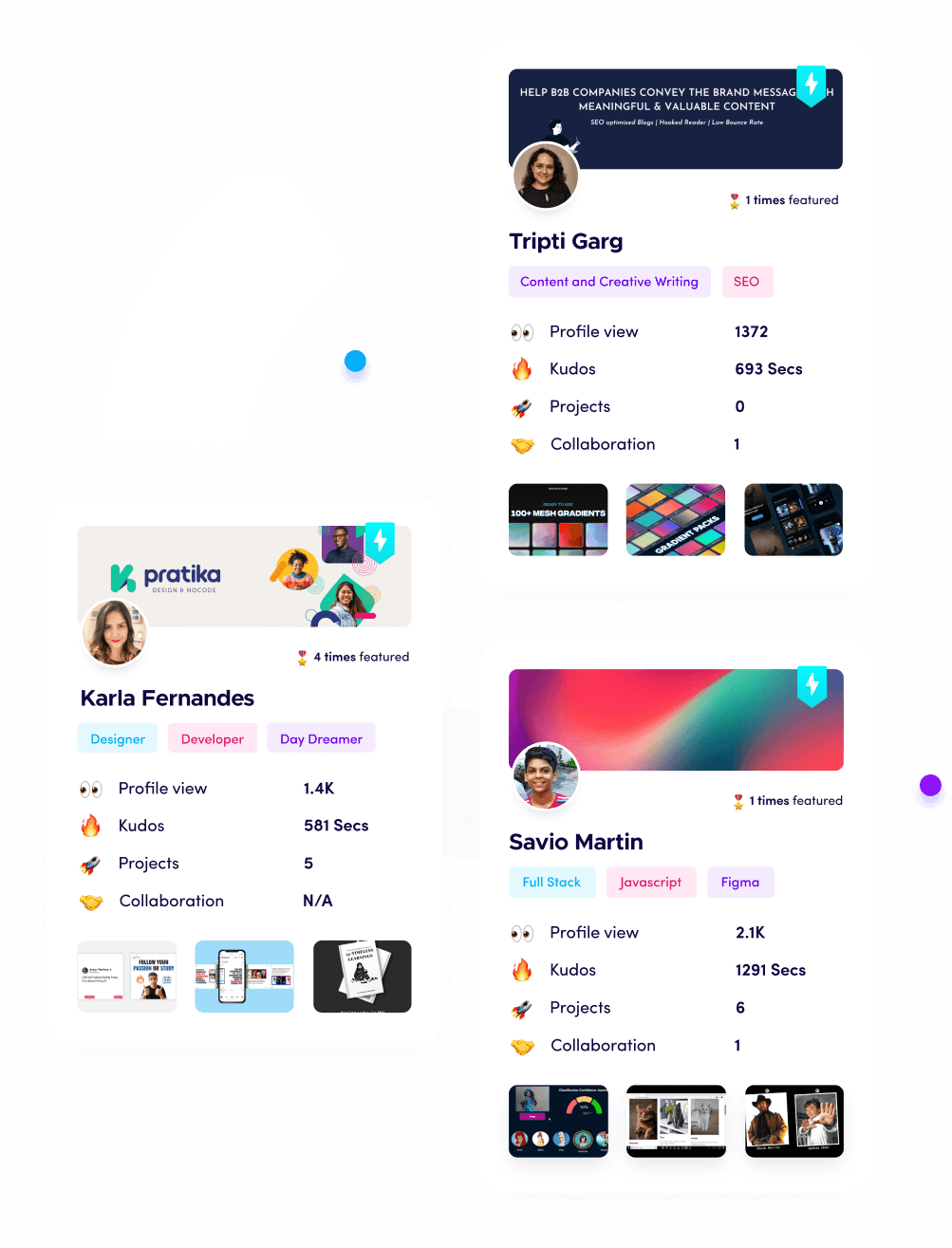Why Employees Lose Job Satisfaction: Four Key Causes

Riten Debnath
12 Jun, 2025

Let’s be honest — it’s not always about the money. Employees walk away from jobs that look perfect on paper because something just feels off. Maybe they’re tired, unseen, or simply not growing. If you’re losing your top people or feeling disengaged yourself, the problem often runs deeper than you think. In this article, I’m diving into the core reasons behind job dissatisfaction and what companies must do to fix it.
I’m Riten, founder of Fueler — a platform that helps freelancers and professionals get hired through their work samples. In this article, I’ve broken down the biggest reasons why employees lose job satisfaction. Because just like a strong portfolio proves someone’s value, a strong workplace culture proves how much companies value their people. Without that, even the best talent will leave — silently.
1. Lack of Growth Opportunities
No one wants to feel stuck. Whether you're in your 20s or 40s, growth is one of the strongest drivers of motivation. When employees feel they’ve stopped learning, or there’s no future path within the company, job satisfaction drops sharply.
This isn't just about promotions — it's about skills, learning, and challenges. If every day feels like a copy-paste of yesterday, the mind shuts down and the heart checks out.
- Employees who get regular training are 2X more likely to stay long term
- Internal promotions build loyalty and reduce hiring costs
- Learning budgets, certifications, and mentorship should be built-in, not optional
When you create a clear ladder — and give employees a reason to climb — they’ll go above and beyond. But when growth feels like a dead end, even loyal team members will start browsing LinkedIn during lunch breaks.
2. Poor Leadership and Communication
People leave managers, not companies. Poor leadership shows up in many ways — lack of clarity, micromanagement, favoritism, or plain disrespect. The worst part? It often goes unnoticed until it’s too late.
If employees feel unheard or undervalued, they emotionally disconnect from their role. Toxic work cultures often start at the top, and bad leadership creates ripple effects — increased absenteeism, quiet quitting, and eventually, resignations.
- Weekly check-ins and feedback loops increase engagement
- Employees who feel heard are 4.6x more likely to perform better
- Transparency builds trust, even during tough times
Managers need to lead with empathy, not just KPIs. They should listen more than they talk, and guide more than they control. Leadership is no longer about authority — it’s about alignment.
3. Mismatch Between Role and Skillset
Imagine hiring a creative strategist and putting them in spreadsheets all day. Or assigning a coder to handle client calls. When roles don’t align with someone’s core strengths or interests, frustration builds — fast.
Many people accept a job based on the description but end up doing work that doesn’t excite them. Over time, this leads to internal conflict — “This isn’t what I signed up for.” Employees either settle into a rut or silently plan their exit.
- Clear role definitions and skill assessments matter
- A skills-aligned employee delivers more output and feels more confident
- Role flexibility allows employees to evolve inside the company, not outside it
As a founder of Fueler, I’ve seen how portfolios reflect real strengths — not just job titles. That’s why Fueler helps companies hire through assignments. Instead of guessing who’s a good fit, you see their work upfront. It reduces mismatches and increases long-term job satisfaction.
4. Lack of Recognition and Appreciation
You don’t need to throw a party every time someone sends an email. But if hard work consistently goes unnoticed, people stop trying. Recognition is one of the most affordable and powerful tools to keep employees engaged — and it’s often ignored.
Appreciation doesn’t have to be loud or expensive. A simple thank-you message, a public shoutout in a team meeting, or a handwritten note from the founder can go a long way.
- 69% of employees say they'd work harder if they felt more appreciated
- Recognition improves morale, teamwork, and retention
- Peer-to-peer shoutouts work just as well as manager-driven rewards
You’d be surprised how far genuine appreciation can take you. Employees don’t just want a paycheck — they want to feel proud of their work, and seen for it.
Early Warning Signs of Declining Job Satisfaction
If you're a founder or manager, here are red flags to notice early:
- Drop in engagement: Employees stop asking questions or contributing ideas.
- Increased absenteeism: Sick leaves and no-shows become frequent.
- Avoidance of responsibility: Tasks are delayed, ownership is missing.
- Low energy in meetings: Cameras off, silence, and minimal participation.
- Reduced performance: Targets are missed without clear reasons.
Recognizing these signs early helps you take action before it’s too late.
How to Prevent Job Satisfaction from Dipping
This is the action section. Let’s make these points big and practical:
Offer Clear Career Paths
When employees know where they’re heading, they stay motivated. Set growth expectations clearly from day one. Don’t wait for them to ask for promotions — proactively discuss new roles, skill development, or lateral moves that keep them engaged. Career mobility reduces boredom and increases retention.
Build a Culture of Appreciation
Don’t underestimate the power of “thank you.” Recognition doesn’t have to be grand — a Slack message, a short email, or a verbal praise in a meeting can boost morale instantly. Create systems where people can appreciate peers openly. This not only increases motivation but strengthens team trust.
Give Autonomy and Trust
Employees perform better when they feel trusted. Avoid micromanagement and give people space to own projects. Let them make decisions and take accountability. Autonomy builds self-esteem and increases emotional investment in the work. Employees want to feel like trusted contributors, not task machines.
Align Work With Purpose
Regularly remind teams how their work contributes to the company’s mission. Share customer stories, business wins, or real-world impact. When people feel their work makes a difference, it builds pride and purpose — which are key drivers of satisfaction.
What Winning Companies Are Doing Right
- Salesforce: Empowers employees through internal mentorship and wellness programs.
- Shopify: Offers “learning budgets” for self-development beyond work.
- Microsoft: Prioritizes psychological safety and open dialogue at every level.
- HubSpot: Encourages employees to design their own growth plans.
- Spotify: Gives autonomy and encourages “no-meeting” focus days.
All these companies prove that building satisfaction is an intentional, ongoing process — not a one-time HR activity.
Why Freelancers and Professionals Need Job Satisfaction Too
Job satisfaction is not just for full-time employees. As someone building Fueler, I’ve seen that freelancers also face burnout, stagnation, and disconnection. The key difference? They need to show what satisfies them — through meaningful work samples.
What HR Leaders Must Do Differently in 2025
- Create feedback loops every quarter and act on them.
- Promote managers who coach, not control.
- Make internal mobility and lateral moves easier.
- Focus on well-being, not just productivity.
- Connect every task to the bigger mission regularly.
Fueler: Your Shortcut to Meaningful Work
On Fueler, professionals get hired not by what’s written on their resume — but by what they’ve actually built. By uploading real assignments and case studies, users feel more connected to their progress, their wins, and their skills. This visibility leads to motivation, confidence, and better opportunities. Whether you're full-time or freelance — purpose is everything.
Final Thought
Job satisfaction is not about ping-pong tables, free food, or funky offices. It’s about meaning, respect, growth, and alignment. Companies that ignore these foundational needs risk losing their best people — quietly and consistently.
If you’re building a company, take these issues seriously. Listen more. Promote internally. Hire based on skills, not degrees. Recognize great work. And give people a future they’re excited about.
Because when employees feel seen, supported, and challenged — they stay.
FAQs
1. What causes low job satisfaction in employees?
Low job satisfaction often stems from poor leadership, lack of career growth, misaligned roles, and absence of recognition.
2. How do I know if my employees are disengaged?
Look for signs like reduced productivity, quiet quitting, frequent absenteeism, and lack of participation in meetings.
3. Why is recognition important for employee morale?
Employees who feel appreciated are more motivated, loyal, and productive. Recognition builds a culture of belonging.
4. What role does leadership play in employee satisfaction?
Leadership sets the tone for the entire team. Clear, empathetic, and growth-oriented leaders build trust and drive engagement.
5. How can companies improve job satisfaction quickly?
Start with listening. Conduct honest feedback surveys, offer learning programs, recognize effort publicly, and clarify career paths.
What is Fueler Portfolio?
Fueler is a career portfolio platform that helps companies find the best talents for their organization based on their proof of work.
You can create your portfolio on Fueler, thousands of freelancers around the world use Fueler to create their professional-looking portfolios and become financially independent. Discover inspiration for your portfolio
Sign up for free on Fueler or get in touch to learn more.


